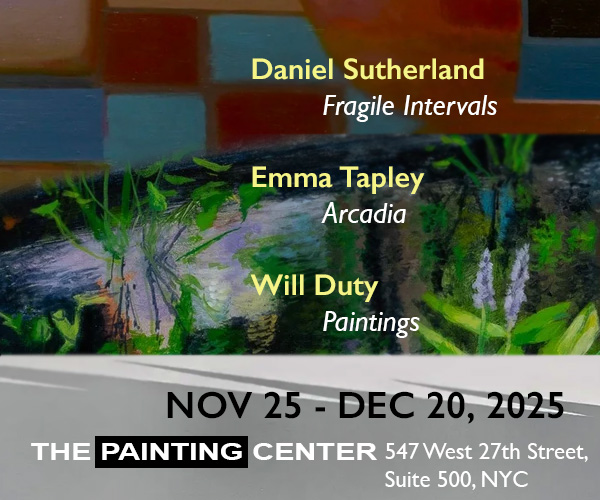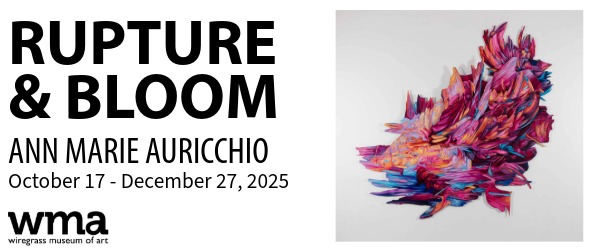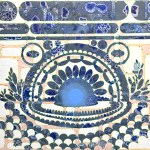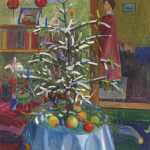
Contributed by Mary Addison Hackett / “How’s everyone doing?” is the occasional check-in I see posted among artist friends who haven’t completely jumped the Facebook ship. In a group devoted to issues relevant to online and F2F teaching during the pandemic, the check-ins are more dire. Artists are on edge, frustrated, and in some cases, literally fearing for their lives if compelled to go back into a physical classroom. Meanwhile, as the Black Lives Matter movement continues to advocate non-violent civil disobedience in protest of racially motivated violence, our government creates a spectacle of tyranny by attacking cities once considered alternative havens for artists outside of NYC or LA.
So now that everyone is adjusting to what it means to live in something improbably close to a failed state, what’s next? What’s the motivation to ride out the pandemic and the rebooting of America in cities where galleries are closing and auxiliary services are becoming scarce or non-existent?
As an artist who has divided her career almost evenly between city, suburban, and now rural living, I’m still grappling with all of this. I moved away from Los Angeles and back to Nashville, my hometown, for different reasons a decade ago. The move was practically necessary and intended to be temporary, but I entertained the idea of making it permanent for the seven years I stayed. I held the fantasy that I was far enough from a major art city to be an outsider, yet professionally active enough to make it work. For various reasons, it wasn’t my time. While I was enjoying the slower pace and the square footage of live/work space I hadn’t had since the late 80s, I wasn’t prepared for the impact of conservative politics on my life. By this I mean that I had naively spent the previous 25 years thinking that Nashville, a rapidly growing metropolitan city, and the South in general had completely purged the residues of Jim Crow and moved on. To be fair, Nashville isn’t just a sleepy Southern city anymore, and it has made some social progress. But in 2016, Tennessee’s overwhelming support for Trump was a personal tipping point. My liberal bubble had burst in the middle of a red state, the election having laid bare the country’s until then latent political polarization. After trying my best to fight the good fight — talking to friends, neighbors, and even strangers — I was deeply disappointed, and in fact angry, with anyone in the South who knew better but didn’t use or raise their voice.

Jerry Brown was still governor in California, and the day he gave his annual state of the state address I began packing. “Let me be clear,” he said. “We will defend everybody — every man, woman and child — who has come here for a better life and has contributed to the well-being of our state.” Those words struck me. I wanted to make art and live in a place where I was proud of my local leaders, and where the people on Nextdoor weren’t profiling every van. Soon I found myself back in California in the mythical unincorporated community of Joshua Tree, population 8,000 give or take. There’s one highway and only three ways out of town, four if you detour through the Park. As more and more Angelenos exit the city, we have jokingly come to call our area East LA.
I’m fortunate to have a part-time teaching job in a place where jobs are scarce, and five acres where I make art documenting mostly commonplace observations about my new life. But rural America is now largely Trump’s playground, and I wasn’t expecting that in California. When I first moved to the desert I was told the demographic was made up of artists, hipsters, active military, veterans, and right-wing Christians, and that they all shop at the same four grocery stores and miraculously all get along. But lately, that’s not the case. After the death of George Floyd, local galleries and businesses wanted to show solidarity and put up BLM banners, window displays and billboards. Sadly, white supremacist pamphlets and graffiti followed, and hate crimes in our small, heterogeneous community were reported.
There’s no common ground between the two groups. What does it mean to live and work among people with deeply different views? Can we shop, eat, buy gas, and support the local economy while skirting politics? Are we able to criticize those we disagree without fomenting public conflagrations? We muse about expanding the audience for art, and being less elitist and more inclusive, but how?


Emily Silver is an artist and curator who moved to the desert from Los Angeles a few years ago. Her work seeks to examine the space between the comic and the tragic that simultaneously exist in the life of an event. For subject matter she typically looks to collective spaces like social media, funerals, parties, parades, and carnivals. Pondering her recent efforts, she notes that — as we sit in all that is bubbling to the top in 2020 I find myself painting and making work that is still examining comic/tragic but much more emotionally tethered to just being present during this shift.
As a curator, she runs the project space Unpaved Gallery in Yucca Valley, launched in January 2019 with artist Stephanie Digregorio. Unpaved is an artist-run venture housed in a shipping container on five acres untamed land in the high desert. (Full disclosure: I was in the inaugural group exhibition.) The gallery is temporarily closed due to Covid-19, but after George Floyd’s death, Silver, a long-time yoga practitioner, launched a virtual yoga studio also called Untamed as an activist practice aimed at helping to foster positive change in people’s lives. A portion of each monthly membership fee is donated to a charitable organization that supports Black Lives Matter, equity in education, LGBTQIA+, or women’s rights. In addition, the studio offers a monthly karma class intended to build further awareness and appreciation of such organizations and promote larger donations. Silver gives them 100% of all the karma class fees.
On the timing of opening Untamed, Silver writes: “With an awakening in our country to break down systemic racism, I wanted to do something that wouldn’t just be today, or a social media post, but something that could live on and implement change regularly. I wanted to create an opportunity to have difficult conversations and spread awareness that was accessible to everyone, and allows others to donate and participate in making change everyday.” The progression of her thinking suggests both the need to appreciate the current moment of national reckoning and the imperative of sustaining its energy and inspiration over the course of a generation and longer.
About the author: Mary Addison Hackett is a visual artist whose practice includes painting, photography, video, writing, and other time-based projects. She currently lives and works in Joshua Tree, California.
Related posts:
Radical reorientation: Leaving New York
The Desert is Not Barren, Part 1
The Desert is Not Barren, 2: John Plowman and Bernard Leibov at BoxoPROJECTS
Ideas and Influences: Mary Addison Hackett
Report from Nashville






















